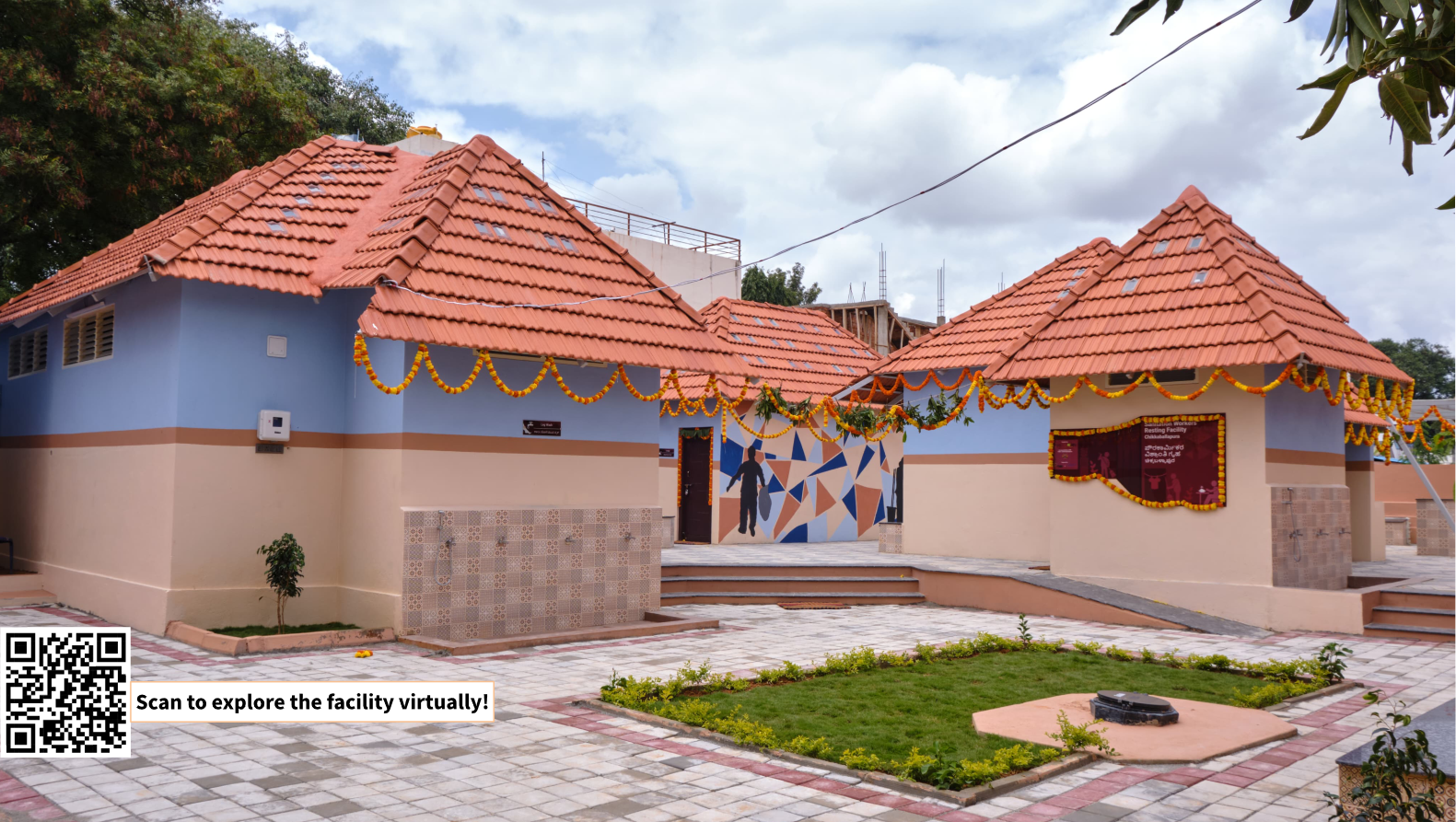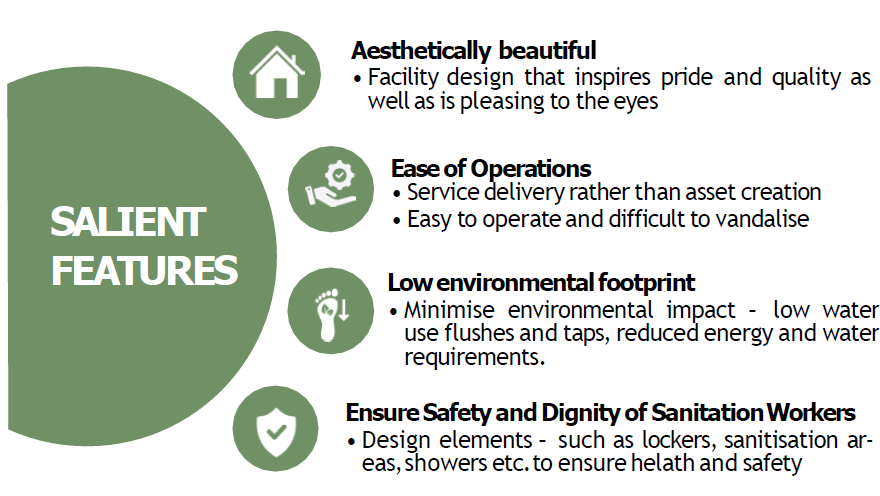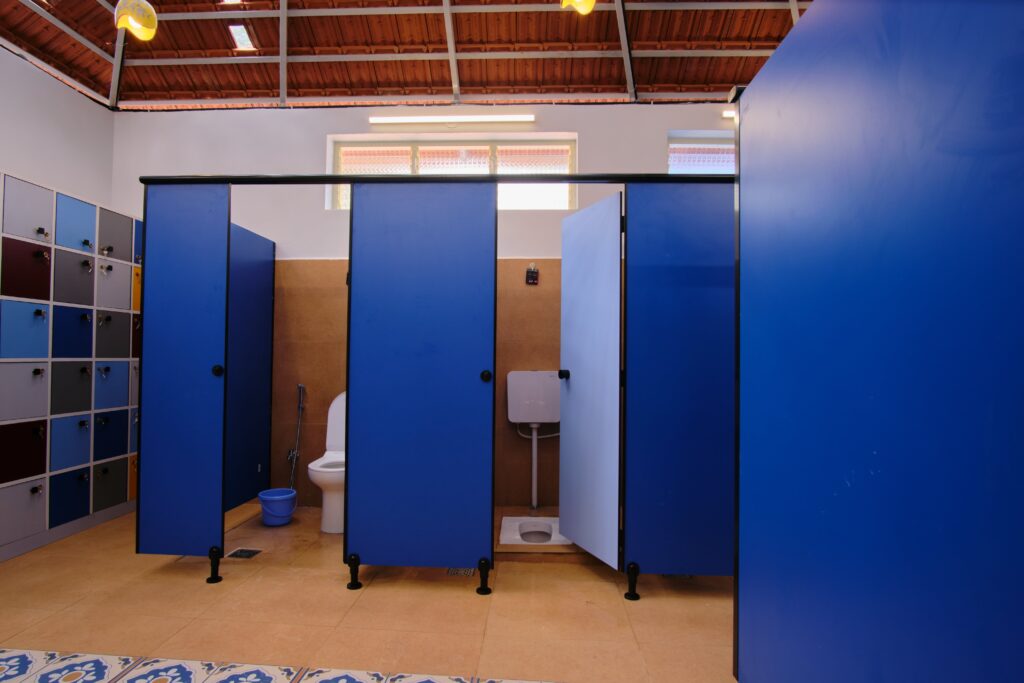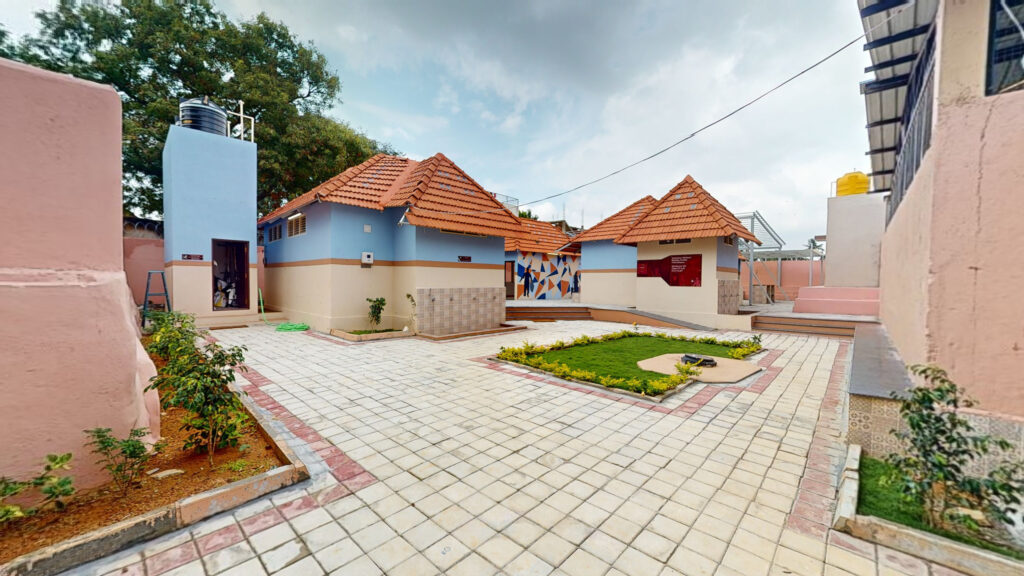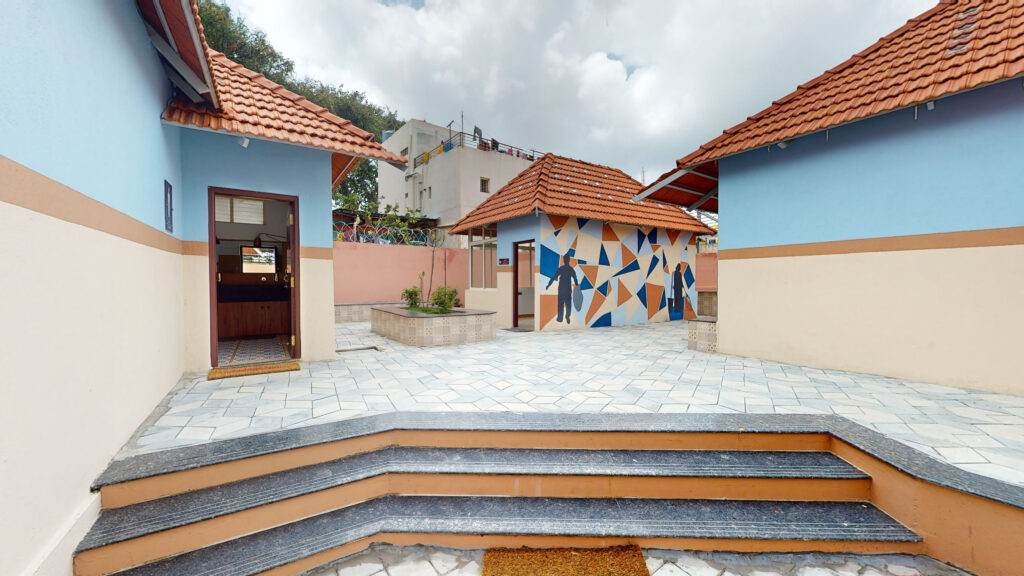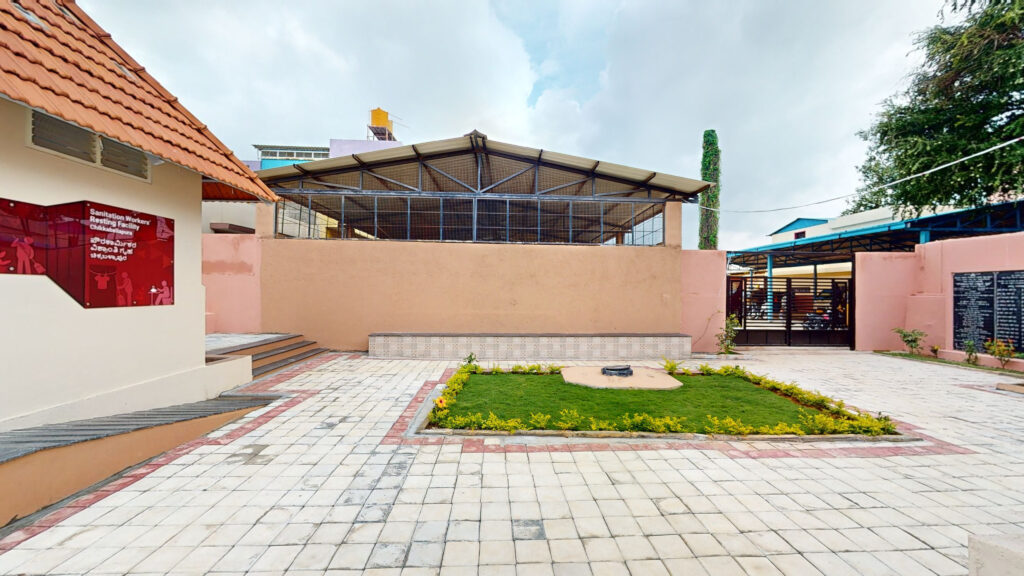Sanitation workers resting facility at Chikkaballapura, Karnataka

Background
Chikkaballapura is a small town located 75 km north of Bangalore, with a population of approximately 75,000. Each morning at 5:30 AM, 150 sanitation workers employed by the municipality begin their daily shifts to maintain cleanliness and sanitation throughout the city. The team ensures door-to-door waste collection, covering nearly 70% of the city’s daily waste output.
Inspired by an exposure visit to Leh, Ladakh, where city officials observed innovative initiatives fostering respect and dignity for sanitation workers, the municipality of Chikkaballapura decided to implement similar measures. The first step was the creation of the Sanitation Workers’ Resting Facility (Pourakarmika Vishranthi Gruha in Kannada).
This facility was conceptualized as a multifunctional space designed to meet the professional and personal needs of sanitation workers. It includes features such as lockers, toilets, sanitization areas, meeting rooms, and a cafeteria. Additionally, it offers a communal area where workers can relax during or after their shifts.
The guiding principle was to create a “mini corporate lounge” to enhance the well-being of sanitation workers, recognizing them as an essential part of the municipal system.
Key Facility Elements
Operation Model
The facility will be owned by the Municipality and managed by a sanitation worker union. The union was unanimously selected from amongst the workers of the town.
The facility will be managed on a day-to-day basis by 4 sanitation workers and monitored by a 4-member working committee. The municipality and the union will jointly manage the funds for the facility.
The facility will be utilized for the following purposes:
• To conduct morning roll-calls and attendance
• To have breakfast and lunch in the break time
• As a community space post their shifts
Design Process
Collaborative Planning
- Key stakeholders were involved in the planning process:
- Sanitation workers
- Municipal officials
- Public health experts
Worker-Centric Approach
- One-on-one and group discussions ensured workers' input.
- Design and functional elements were reviewed and approved by workers before implementation.

